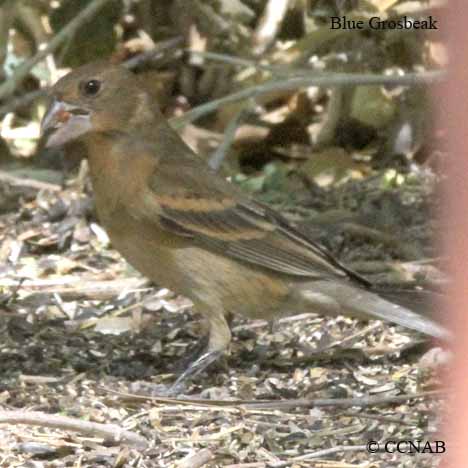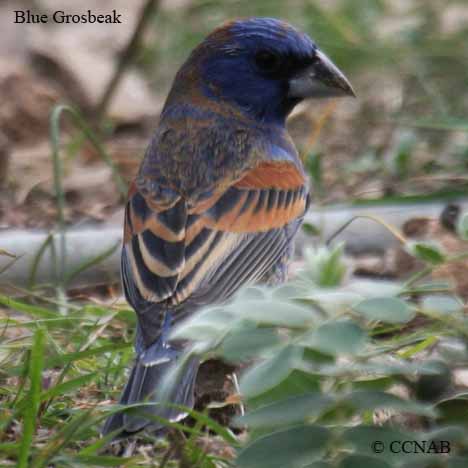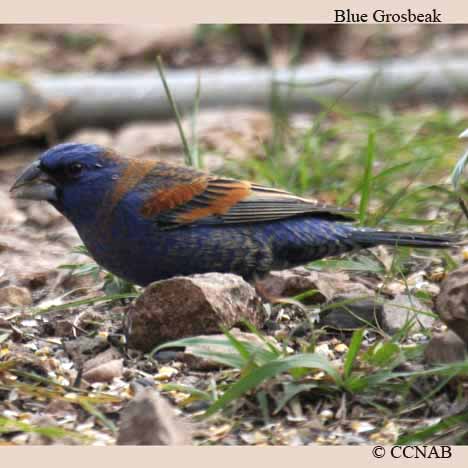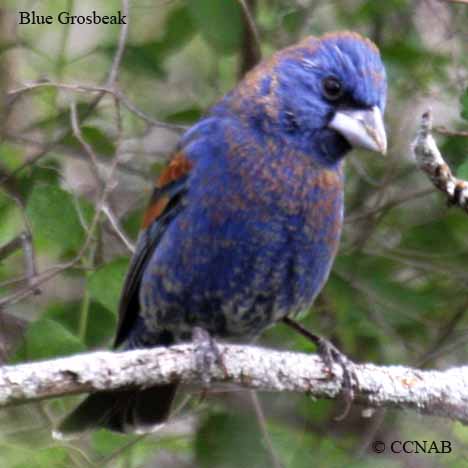Birds of Cuba Search Box
This search box can be used to find bird species using bird's english, french or latin name.
Birds of Cuba, Vagrant Visitors, Introduced Birds and Possibilities
Blue Grosbeak
Guiraca bleu
Passerina caerulea
Information, images and range maps on over 400 birds of Cuba
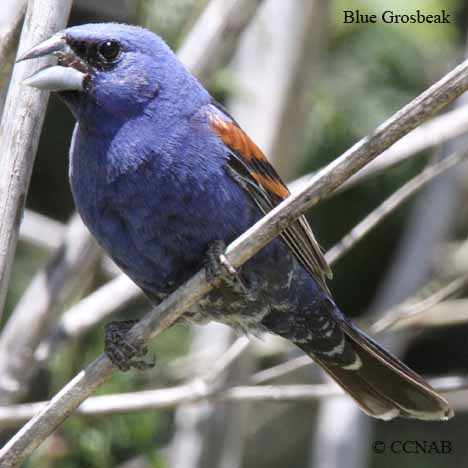
Life, Habitat & Pictures of the Blue Grosbeak
| B L | W W | W | Family | Latin Name |
|---|---|---|---|---|
| 6.75" 17.14cm | 11" 28cm | 1.0 oz 28.34g | Cardinalidae | Passerina caerulea |
- Breeding
- Year Around
- Winter
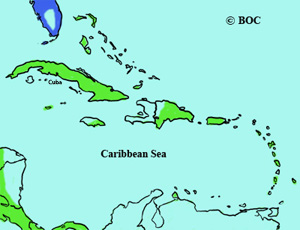
The Blue Grosbeak is found in fields and weedy areas and it prefers to be close to water. This grosbeak can also reside in thickets and riparian landscapes. It is seen along the eastern coast, north to New York, it has been reported even farther north from time to time. Going west, it can be found as far as California, back through Texas, to the southern tip of Florida. This grosbeak has been reported seen in Cuba.
